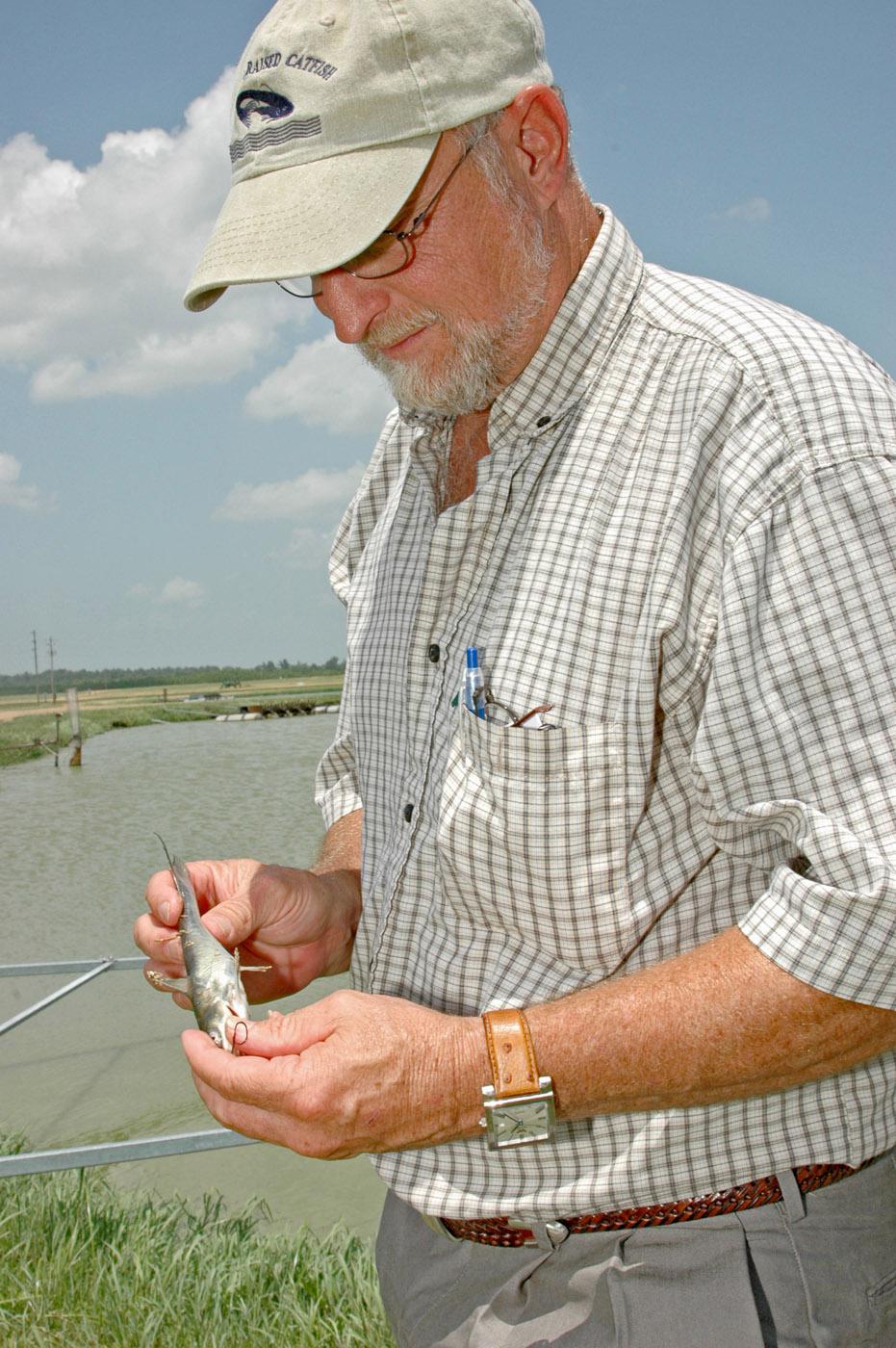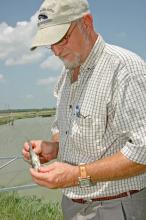Information Possibly Outdated
The information presented on this page was originally released on July 14, 2006. It may not be outdated, but please search our site for more current information. If you plan to quote or reference this information in a publication, please check with the Extension specialist or author before proceeding.
Weather, markets favor U.S. farm-raised catfish
MISSISSIPPI STATE – Mississippi's farm-raised catfish farmers have had their best hatchery season in 30 years and are seeing their best market prices since 1995.
Jim Steeby, aquaculture specialist with Mississippi State University's Extension Service, said the warm temperatures in April were ideal for the final maturing period.
“Fish started spawning by mid-April and were nearly finished by the first week in June, which is about three weeks early,” Steeby said. “Farmers were able to stock fry ponds earlier and have the entire summer for the fish to grow.”
Since catfish do not eat when water temperatures fall below 65 degrees, Steeby said this year's fingerlings should be larger than normal.
“Instead of a 5-inch fingerling, farmers should harvest sizes closer to 6-inches. That will mean the fish will be more valuable going into the grow-out ponds, so farmers can get more for each fish,” Steeby said.
The hot, dry conditions also have forced farmers to pump more water, which adds to electric and fuel bills.
Terry Hanson, associate professor of agricultural economics with the Mississippi Agricultural and Forestry Experiment Station, said prices from the processor to the farmer are up about 7 cents per pound over last year. The market situation is much better than five years ago when prices were at all-time lows.
“Farmers are getting about 79 to 82 cents per pound. The average over the last 20 years is about 70 cents per pound, and below 65 cents if you just look at the last five years. With the inflation factor, current price levels are not as good as prices 20 years ago, but catfish farmers have become more efficient. They have overcome inflationary effects by producing more fish,” Hanson said.
“Historically speaking, catfish is a relatively new industry, but it seems like every 10 years the prices bottom out. Interestingly, that seems to happen in years that end in a two -- 1982, 1992 and 2002 produced rock-bottom prices,” Hanson said.
Since 2001, Mississippi acreage has decreased about 13,000 acres, primarily in Humphreys County, the heart of catfish country and where the oldest ponds were located. Rather than investing in pond maintenance, farmers removed older ponds from production. Mississippi's catfish acreage in recent years has been stable at 100,000 acres.
Hanson said farmers have reduced their inventory of fish to the point that fish are relatively scarce, and now, processors are having difficulties keeping enough fish on hand to operate their plants efficiently.
“There will be a lot of fingerlings available this fall and spring, and prices will encourage farmers to fully stock ponds. Consolidation of smaller farms is also a trend we are seeing,” he said. “Prices may remain strong until 2008.”
Roger Barlow, president of the Mississippi-based Catfish Institute, said demand for U.S. farm-raised catfish is strong.
“Consumers know that the “U.S. Farm-Raised Catfish” packaging seal represents a quality and safe product of the highest standards,” Barlow said. “In recent years, we are seeing more consumers turn to fish for a healthy diet.”
Barlow said the institute is working to spread the news of the benefits of eating catfish as well as helping consumers learn new cooking methods.
“We've always seen a lot of Southern-fried catfish, and we always will. In the future, we expect to see more grilling, baking and broiling methods used. Blackened catfish is rapidly gaining popularity,” he said.




